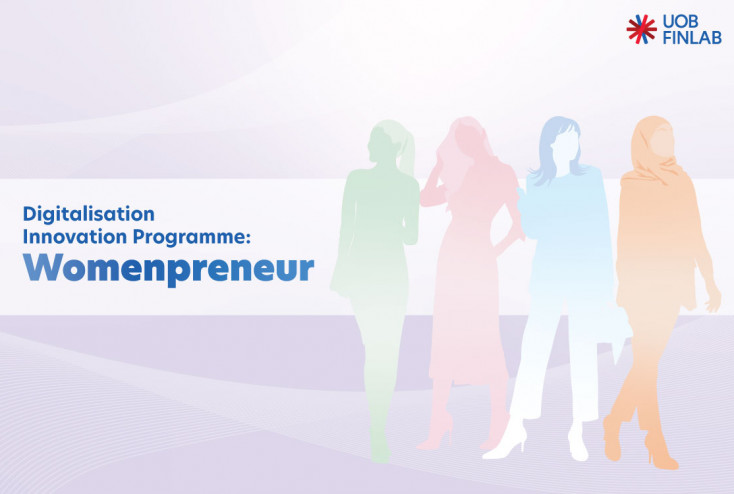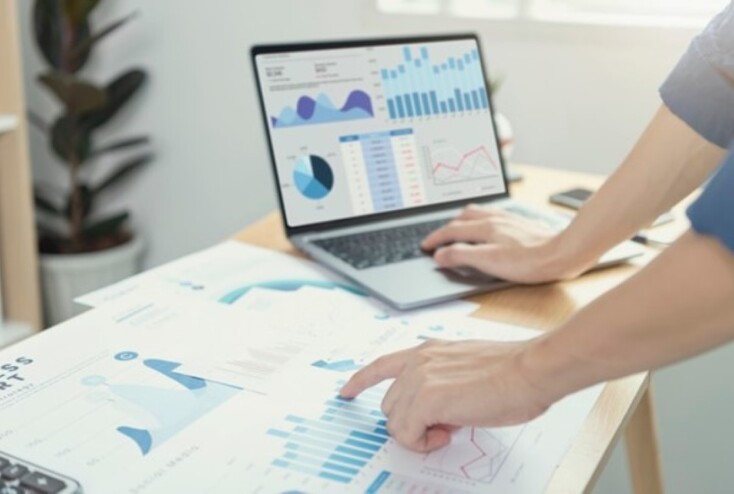
Announcing Digitalisation Innovation Programme: Womenprenuer 2025
Announce D.I.P:W 2025 and cement UOB FinLab’s commitment to empowering female entrepreneurs.

Saying that Small and Medium Enterprises (SMEs) are the backbone of Singapore’s economy is an understatement. As they make up 99 percent of all enterprises, it is fairer to say that they are also the flesh and blood of Singapore’s economy.
However, SMEs today stand at the precipice of a new industrial age – one that is leveraging technology in ways we could not have imagined before. This is not only in relation to the great strides made in the development of once-niche technologies such as artificial intelligence (AI), machine learning and blockchain; the ever-expanding reach of the internet to people across the globe – and the mobile platforms that online content is being consumed through – has transformed the demands of today’s consumers.
And with evolving demands, all businesses need to adapt. Technology has given birth to new sales and distribution channels, but the cost and implementation of the right technologies remain a significant barrier to businesses bereft of the resources of large corporations. In a business environment that is being increasingly saturated with competition on the domestic and international fronts, SMEs now need to digitalize; not only to survive in the new economy but also to leverage the new opportunities and thrive in it.
While future-proofing is necessary for businesses looking to operate sustainably in today’s economy, going digital is not simply a process of latching onto whatever solutions that are present in the market. Like any new opportunities or investments, businesses need to understand what approach they wish to take that will be aligned to their strategy, followed by which technologies are right for their business model and staff.
For instance, a brick-and-mortar retailer may want to expand their customer base. The most immediate way might be to build a website to sell directly to consumers or sign up to an e-commerce platform. Each approach serves different objectives. Once the channel is decided, the retailer needs to consider how the new channel will impact inventory and delivery, and if the existing sales and marketing team can handle the requirements involved in promoting an online channel versus a brick-and-mortar one.
The retailer can also consider improving their sales efficiency by investing in technology that is able to meet the new demands of the fast-paced digital economy, to capture and share data effectively, and to plug into other third-party tools easily, and to scale it up as the business grows. These should be on top of the ability to help the business manage processes such as procurement, inventory and customer relationship management seamlessly.
Technology is ultimately an enabler for SMEs. Going digital is about seeing the big picture, choosing the right strategy and approach, and investing money and resources in the right technology. Right strategy and commitment in implementation are the keys to success in digitalization.
SINGAPORE
MALAYSIA
INDONESIA
THAILAND
VIETNAM


Announce D.I.P:W 2025 and cement UOB FinLab’s commitment to empowering female entrepreneurs.

Explore the rising demand for digital solutions in ASEAN

Learn more about the up and coming top 2025 trends in digitalisation and sustainability

Designed for business owners to enhance their digital capabilities through practical learning, this programme takes businesses to the next level.
Designed for business owners to enhance their digital capabilities through practical learning, this programme takes businesses to the next level.


Bridge ideas and innovation, subscribe to the FinLab Connect now!